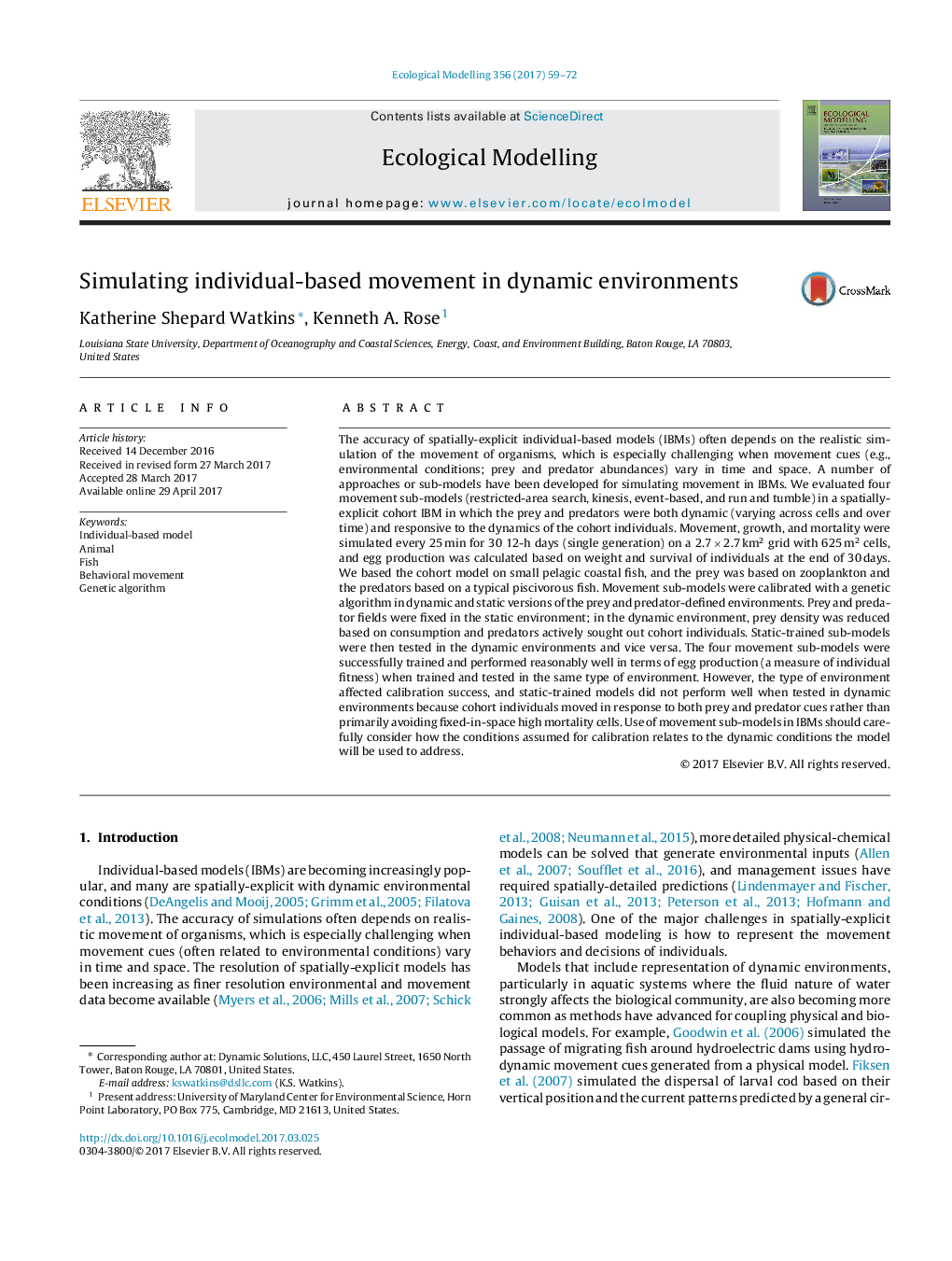| کد مقاله | کد نشریه | سال انتشار | مقاله انگلیسی | نسخه تمام متن |
|---|---|---|---|---|
| 5742203 | 1617391 | 2017 | 14 صفحه PDF | دانلود رایگان |
- Four movement approaches calibrated and tested in static and dynamic environments.
- Individuals moved in response to prey/growth and predators/mortality.
- Weight given to growth versus mortality depended on the training environment.
- Models trained in a static environment were not reliable in a dynamic environment.
The accuracy of spatially-explicit individual-based models (IBMs) often depends on the realistic simulation of the movement of organisms, which is especially challenging when movement cues (e.g., environmental conditions; prey and predator abundances) vary in time and space. A number of approaches or sub-models have been developed for simulating movement in IBMs. We evaluated four movement sub-models (restricted-area search, kinesis, event-based, and run and tumble) in a spatially-explicit cohort IBM in which the prey and predators were both dynamic (varying across cells and over time) and responsive to the dynamics of the cohort individuals. Movement, growth, and mortality were simulated every 25Â min for 30 12-h days (single generation) on a 2.7Â ÃÂ 2.7Â km2 grid with 625Â m2 cells, and egg production was calculated based on weight and survival of individuals at the end of 30Â days. We based the cohort model on small pelagic coastal fish, and the prey was based on zooplankton and the predators based on a typical piscivorous fish. Movement sub-models were calibrated with a genetic algorithm in dynamic and static versions of the prey and predator-defined environments. Prey and predator fields were fixed in the static environment; in the dynamic environment, prey density was reduced based on consumption and predators actively sought out cohort individuals. Static-trained sub-models were then tested in the dynamic environments and vice versa. The four movement sub-models were successfully trained and performed reasonably well in terms of egg production (a measure of individual fitness) when trained and tested in the same type of environment. However, the type of environment affected calibration success, and static-trained models did not perform well when tested in dynamic environments because cohort individuals moved in response to both prey and predator cues rather than primarily avoiding fixed-in-space high mortality cells. Use of movement sub-models in IBMs should carefully consider how the conditions assumed for calibration relates to the dynamic conditions the model will be used to address.
Journal: Ecological Modelling - Volume 356, 24 July 2017, Pages 59-72
